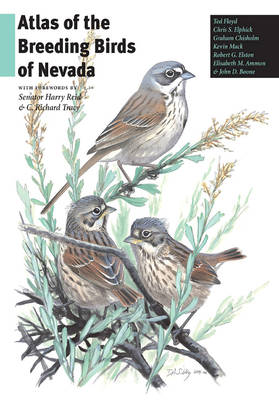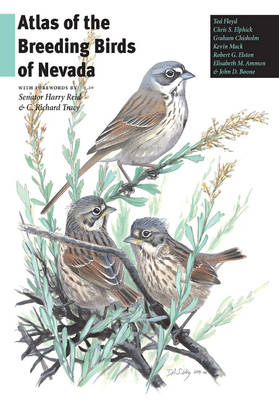
Je cadeautjes zeker op tijd in huis hebben voor de feestdagen? Kom langs in onze winkels en vind het perfecte geschenk!
- Afhalen na 1 uur in een winkel met voorraad
- Gratis thuislevering in België vanaf € 30
- Ruim aanbod met 7 miljoen producten
Je cadeautjes zeker op tijd in huis hebben voor de feestdagen? Kom langs in onze winkels en vind het perfecte geschenk!
- Afhalen na 1 uur in een winkel met voorraad
- Gratis thuislevering in België vanaf € 30
- Ruim aanbod met 7 miljoen producten
Zoeken
Omschrijving
Nevada's diverse landscape, which ranges from lofty alpine peaks to marshy wetlands, saline playas, sagebrush-covered steppes, and lush agricultural valleys, is home to a surprising number and variety of bird species. The Atlas of the Breeding Birds of Nevada documents the first-ever statewide survey of breeding birds, undertaken between 1997 and 2000. The book presents the 275 species of birds that breed in Nevada, with a description of each bird; an analysis of its breeding distribution within the state; discussion of its conservation status; a line drawing by artist Ray Nelson; a map illustrating its distribution throughout the state; and summary statistics on its breeding status, habitat distribution and abundance. The atlas, a project of the Great Basin Bird Observatory, has as its major objective the quantification of the diversity and grandeur of Nevada's bird life. It also addresses questions about the management and conservation of bird populations in the state, range limits, the impact of bird population changes, and the future prospects of various species, given current and projected patterns of land use. The book reflects meticulous and lengthy research by some of the state's most respected ornithologists and a corps of dedicated volunteers, and it is an invaluable resource for scientists, birders, conservationists, and anyone interested in the rich natural heritage of Nevada.
Specificaties
Betrokkenen
- Auteur(s):
- Uitgeverij:
Inhoud
- Aantal bladzijden:
- 608
- Taal:
- Engels
Eigenschappen
- Productcode (EAN):
- 9780874176957
- Verschijningsdatum:
- 9/03/2007
- Uitvoering:
- Hardcover
- Formaat:
- Genaaid
- Afmetingen:
- 223 mm x 286 mm
- Gewicht:
- 2635 g

Alleen bij Standaard Boekhandel
+ 181 punten op je klantenkaart van Standaard Boekhandel
Beoordelingen
We publiceren alleen reviews die voldoen aan de voorwaarden voor reviews. Bekijk onze voorwaarden voor reviews.









